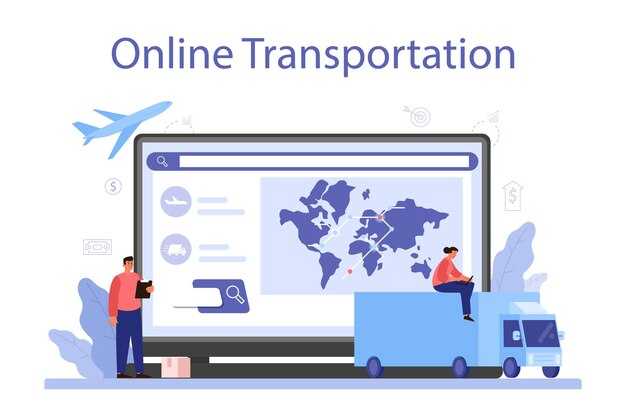Platforms that connect freight carriers with shippers across the European Union unlock a set of value drivers for fleet operators and independent drivers alike. They provide real-time demand signals, digital documents, and transparent pricing that help carriers plan loads more efficiently and expand their geographic reach.
Increased visibility and faster matching enable carriers to reduce downtime and keep assets productive. Real-time load postings, route suggestions, and performance metrics help plan efficient trips and minimize empty miles across borders.
Operationele efficiëntie comes from digital document flow (bills of lading, permits), automated invoicingen secure payments that shorten cash cycles and reduce administrative overhead.
Risk and trust are improved through transparent rating systems, standardized service levels, and easy dispute resolution. Some platforms integrate insurance options en compliance checks to smooth cross-border operations.
Strategic advantages include data-driven optimization, sustainable routing by reducing empty miles, and access to a broader pool of shippers, including SMEs, enabling scale and diversification for fleets of all sizes.
Real-Time Load Matching to Cut Empty Miles

Real-time load matching connects carriers with live shipment offers and uses current position data to pair available equipment with suitable loads in the moment. By broadcasting capacity and demand across EU freight platforms, a truck that becomes available can be matched with a nearby opportunity before it begins an empty leg.
Reduces empty miles by prioritizing proximity, shipment urgency, and equipment compatibility. This approach cuts deadheading distances, lowers fuel consumption, and minimizes unnecessary truck movement, keeping more miles loaded and productive.
Fleet utilization improves as dispatch decisions are accelerated and more loads are secured for each asset. Real-time matching enables dynamic route planning, faster acceptance cycles, and better alignment with driver hours, helping maintain continuous cargo coverage without long downtimes at yards or terminals.
On EU platforms, transparantie en pricing visibility support stable revenue streams. Carriers can select higher‑quality loads that fit their lanes, reduce empty repositioning, and optimize payload-to-mile ratios while meeting cross‑border regulation timelines.
Operational readiness requires accurate data, reliable telematics, and secure, compliant data exchange. Integrations with GPS, shipment status, and document verification ensure trustworthy matching and consistent performance, delivering measurable reductions in empty transport and improved profitability.
Transparent Fees and Prompt Payouts
Transparent fees on EU freight platforms provide an itemized, upfront breakdown for every charge associated with moving a load. Each line displays the amount, the calculation method, and the applicable currency, with taxes or regulatory charges clearly identified where relevant. Carriers see platform commissions, payment processing fees, insurance add-ons, fuel surcharges, and any accessorial charges before accepting a match, eliminating surprise costs and enabling accurate profitability planning across routes and customers.
The pricing model is designed to be consistent and explainable across regions and services. Flat-rate and percentage-based fees are disclosed in advance, with dynamic adjustments explained and traceable in the invoice history. Currency handling is transparent, including real-time exchange rate references or fixed-rate conversions, so carriers know the net earnings in their preferred currency. Tax treatment and any reverse charges are clearly stated, ensuring compliance and reducing reconciliation effort at month-end.
Transparent pricing enables apples-to-apples comparisons between bids and shipper offers. Carriers can quickly calculate net revenue, total trip costs, and break-even points for different lanes. This clarity supports smarter load selection, more stable budgeting, and better negotiation leverage with shippers, since platforms demonstrate how every euro is allocated and why a given rate is warranted.
Prompt payouts ensure cash flow resilience. After a trip is completed and the shipment is verified, funds are released within a guaranteed payout window, often with options for next-day, weekly, or biweekly settlements. Payments can flow directly to bank accounts, through secure transfers, or to digital wallets, with multi-currency options available to simplify cross-border operations. Clear reconciliation data accompanies each payout, including load IDs, rate breakdowns, and any adjustments or dispute outcomes.
Security and compliance underpin rapid settlements. Payment rails adhere to EU standards for secure processing, including strong customer authentication where applicable, encrypted transfers, and auditable transaction histories. Escrow mechanisms or risk controls protect both carriers and shippers during disputes, while transparent post-transaction reporting helps carriers track aging receivables and monitor settlement timelines across multiple customers and markets.
To maximize benefits, carriers should review fee schedules before accepting loads, enable currency preferences, and opt into automated notifications for payout events. Consolidating invoicing where possible reduces administrative overhead, while setting clear payout expectations with the platform minimizes gaps between delivery and payment. Regularly verifying settlement terms and keeping contact channels open with platform support helps ensure that the promised transparency translates into steady, predictable cash flow.
Integrated Compliance Tools, Insurance Options, and Dispute Support

Integrated compliance tools on EU freight platforms consolidate regulatory requirements into a single interface, enabling carriers to operate with confidence. Real-time feeds cover customs procedures, VAT obligations, Intrastat reporting, EORI validation, sanctions screening, and licensing checks for controlled goods. The system flags gaps in documentation, triggers proactive alerts, and pre-fills standard forms such as commercial invoices, packing lists, CMR notes, and proof of delivery templates. It supports electronic data interchange (EDI), electronic CMR, and digital signatures to standardize records across the network. Comprehensive audit trails and version history simplify audits and regulatory reporting.
Compliance features include automated tariff classification and HS code mapping, duty and VAT estimation, and landed-cost previews. Route screening evaluates embargoed destinations, license requirements, and restricted commodities before a shipment is released for transport. Tachograph compliance, driver-hour checks, and incident logging help road carriers meet EU and national regulations. Digital SOPs, checklists, and policy templates standardize operations and reduce human error, while privacy controls ensure GDPR-aligned data handling and secure data retention.
Insurance options are integrated into the platform, giving access to cargo cover, liability protection, and contingent cargo insurance with centralized policy management. Policies can be configured as open cover or per-shipment, with adjustable insured value, perils, deductibles, and sub-limits tailored to route and cargo type. Coverage typically includes standard all-risks or named-perils for loss, theft, and damage, plus extensions for temperature control, moisture, and transit-related hazards. Digital claims submission, automatic claim creation from trip data, photo and video evidence uploads, and fast adjudication streamline the settlement process. Certificates of insurance, expiry reminders, and policy-transfer features simplify onboarding of new contracts.
Pricing and coverage options support dynamic premiums based on route risk, cargo category, and carrier performance. Telematics integrations enable discounts for safe driving, on-time delivery, and route optimization. Add-ons such as temperature-controlled coverage, high-value electronics, salvage and debris removal, and hijack or burglary endorsements address specialized needs. In-platform endorsement handling and subrogation workflows ensure quick recovery where applicable, with transparent documentation for all stakeholders.
Dispute support provides end-to-end claim management workflows from notification to resolution. Built-in evidence collection tools capture time-stamped photos, GPS/telematics data, scanned B/Ls and CMRs, and correspondence logs, all stored in a secure, auditable repository. Standardized dispute templates and guided communications reduce cycle time and miscommunication, while automated escalation to insurers, brokers, or platform risk teams keeps SLAs intact. Progress dashboards show claim status, required actions, and expected resolution timelines; mediation and arbitration templates are available if settlements require third-party adjudication. Integration with the platform’s dispute portal ensures consistent treatment across partners and routes.
These integrated tools minimize administrative overhead, improve data integrity, and shorten settlement cycles, delivering higher predictability for EU operations. Carriers gain faster access to compliant documentation, more reliable insurance coverage, and stronger dispute resolution capabilities, all within a single, auditable system. The approach supports scalable growth by reducing onboarding time for new routes and enabling cross-border shipments with confidence.

 Benefits for Carriers on EU Freight Platforms">
Benefits for Carriers on EU Freight Platforms">
